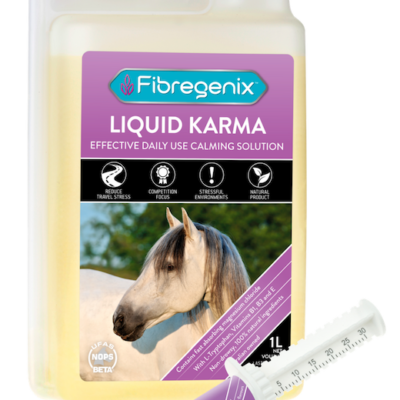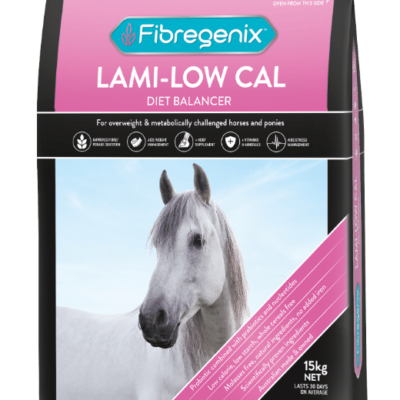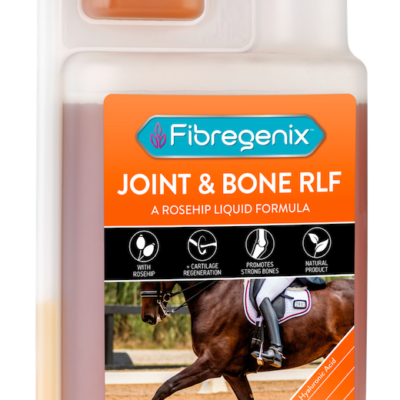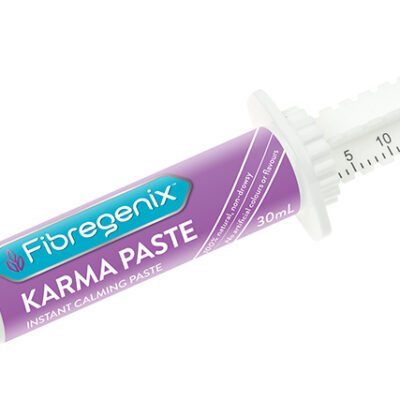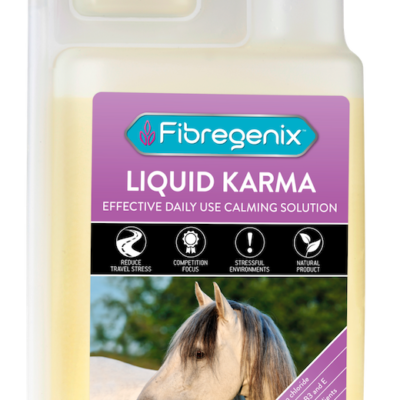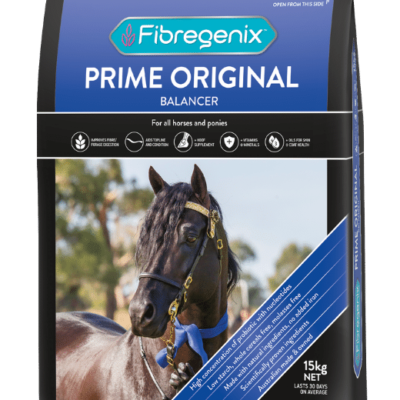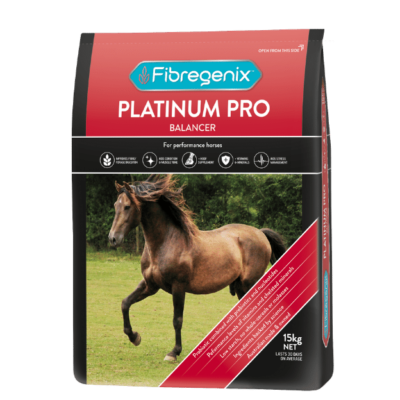Sep 30, 2024 | General feeding practices
Why SAND is good for your horse…
Wait – you say – did I just read that right? Sand??? Surely not?! Actually, you can breathe a sigh of relief because I’m talking about SAND – Supporting All Nutrient Deficiencies 😊
So why do horses get nutrient deficiencies?
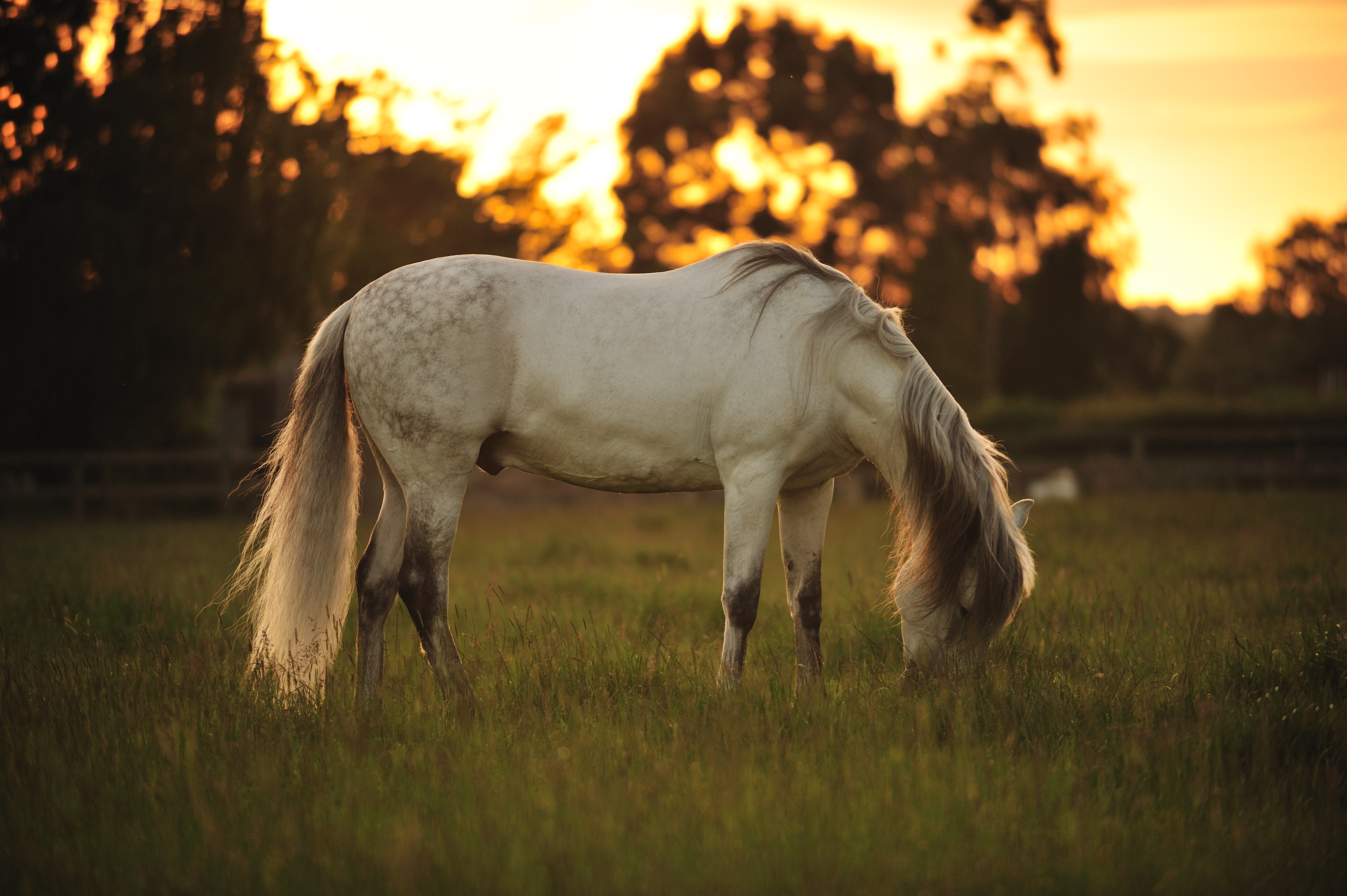
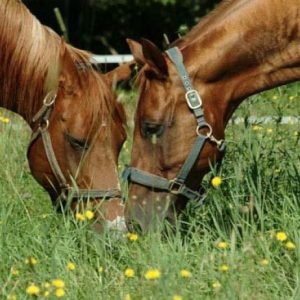
 Horses have evolved to roam for miles surviving on mostly grass forage and consume a wide range when available. Compared to their feral cousins, domestic horses have far more challenges when it comes to their diets. We provide restricted areas by creating paddocks which often have limited forage types or unsuitable grass species. Plus, availability and nutrient uptake content can fluctuate considerably from season to season, as well as challenges with soil deficiencies. In the short term – just like us – equines are reasonably resilient to many nutrient deficiencies or even excesses. However long-term, problems start to creep in. Poor hooves and coat quality, loss of topline and overall condition, digestive issues leading to poor performance and behaviour etc. The list goes on. Despite us having access to a plethora of the latest and greatest fortified hard feeds and hay at our disposal.
Horses have evolved to roam for miles surviving on mostly grass forage and consume a wide range when available. Compared to their feral cousins, domestic horses have far more challenges when it comes to their diets. We provide restricted areas by creating paddocks which often have limited forage types or unsuitable grass species. Plus, availability and nutrient uptake content can fluctuate considerably from season to season, as well as challenges with soil deficiencies. In the short term – just like us – equines are reasonably resilient to many nutrient deficiencies or even excesses. However long-term, problems start to creep in. Poor hooves and coat quality, loss of topline and overall condition, digestive issues leading to poor performance and behaviour etc. The list goes on. Despite us having access to a plethora of the latest and greatest fortified hard feeds and hay at our disposal.
So, what is going on exactly and what can we do about it?
Forage – is this supporting all nutrient deficiencies?
The world climate is changing – FACT. And we cannot always rely on consistent supplies of decent quality hay that’s sweet smelling, dust and mould free. or of a type that’s wholly compatible with the horse’s delicate digestive system. Shortages are becoming more commonplace resulting in panic buying leading to lack of choice and availability. This results in people having to feed cereal forage just to keep roughage going through their horse. But is this a problem? Well, potentially yes. For example, in WA this year with chronic hay shortages there was a significant rise in cases of impaction colic. Cause? Feeding barley straw as a sole forage source.
What can you do?
Well, thank goodness the new season crops are starting to arrive which takes the pressure off. So look for the best quality hay that will be best utilised by your horse. But again, try and refrain from ‘stocking up’ unnecessarily otherwise we’ll be back to square one again.
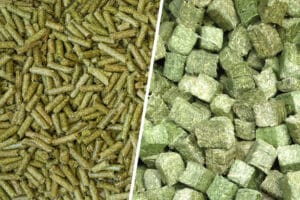 Consider bagged fibre products to complement hay intake. The latest lupin fibre mash products spring to mind or hay cubes/pellets. Remember, investing in a quality feed ultimately pays dividends.
Consider bagged fibre products to complement hay intake. The latest lupin fibre mash products spring to mind or hay cubes/pellets. Remember, investing in a quality feed ultimately pays dividends.
Hard feed – is this supporting all nutrient deficiencies?
Many people have performance horses that need the type of energy that only a starch-based hard feed can supply. And there are plenty to choose from. Just be certain your horse really needs hard feeding for his workload and don’t forget the rules about feeding starch. Ie, feed small amounts often to avoid digestive problems. Where possible, rely on quality forage sources, fat based or legumes instead. But here’s a question. Can hard feed really do the job of supporting all nutrient deficiencies? Well, if you feed the recommended daily serve as suggested on the bag, then yes, it can. After all, that’s what it’s been formulated to do. But feed far less than the recommended daily serve and this is when the wheels start falling off. A bag of hard feed has daily feeding rates typically in the range of 0.25 up to 0.5kg per 50kg of body weight. This is to ensure the horse gets a full complement of essential daily nutrients. However, feeding less than this will leave your horse with key deficiencies that over time might cause health issues.
Supplements – supporting all nutrient deficiencies.
Ah, a great bone of contention for many. When belts need tightening and purse strings need shortening, what’s the first thing we ditch in the horse’s diet? Supplements! I see it all too often. And for sure, supplements can be an expensive addition to your horse’s diet. But does he really need them? Many will swear by the practice of keeping things simple, relying on natural, non-processed feeds and their horses thrive. But what about those horses who end up not thriving? My inbox is bulging with queries from people who tried to keep it simple and failed. Their horses dropping weight like a stone, looking pretty average, and issues like gastric ulcers or worse have developed. Do you have the best maintained and healthiest paddocks and access to the best quality hard feeds and hay? If yes, wonderful!! If not, then many people will ditch supplements and feed a fraction of that hard feed. Primarily too make it last longer and save money. Unfortunately, this practice is going to ultimately impact your horse’s health and well-being long term. End result? Yep, more vet’s bills….
So where does SAND come into the picture?
We’ve all read about the perils of over-supplementing or under-supplementing. Knowing the importance of vitamins and minerals to horse health shouldn’t lead to the assumption, “if some is good, more must be better.” I tend to see more cases of over-supplementing which are keeping people (and horses) the poorer for it. There’s an optimal range (sometimes wider, sometimes more narrow) for each vitamin and mineral required by the horse’s body. Toxicity can result from stepping past the upper limit of that range. And it’s often no less dangerous to a horse’s health than the deficiency caused by failing to meet the lower threshold. This is why when it comes to supporting all nutrient deficiencies, keeping it simple is still the way to go. Important to note that if a nutrient isn’t in a form that’s easily digested and absorbed, it may as well have never been fed at all.
So what should I look for in a supplement that is SAND? Well fortunately, we have a pretty awesome solution… A Fibregenix balancer supplement. These supply quality digestible protein, omega 3 and 6 fatty acids, every essential vitamin and mineral including bioavailable chelate forms. Not only that, they include the very best in digestive and gut health aids. All wrapped up in a palatable fibre package that horses love.
How will they help?
Our range of 3 very nutrient dense specialist Fibregenix balancer supplements is whole cereal free, super low in starch and sugars and each balancer is multi-faceted in their approach and function.
Here’s just a few of the things you can expect…
- they’ll complement that forage diet your good doer is on;
- help you cut down on starch-based hard feed for that performance horse you compete on. Look after his digestive and gut health promoting fitness and work recovery. Boost immunity, and help to manage his stress levels.
- give your golden oldie a valuable boost of essential nutrients and support his digestive capability,
- support your metabolic or laminitic horse or pony with vital nutrients and powerful gut health aids.
- promote topline and condition for your poor doer who needs a much needed pick me up and better feed utilisation.
- support your convalescing horse providing a valuable boost of nutrients, whilst helping him to keep calm aiding in his recovery.
- boost your broodmare’s nutrition during pregnancy and lactation. Provide great gut health from the start for your foal. Ensures your youngsters have steady growth rates, great quality hooves and coat. Support the bone development of growing horses.
Get the picture? And they deliver so much more for so many categories of horses and ponies. Not only that, you’ll consolidate your supplements in one palatable product which will save you money long term.
All these benefits in 3 amazing products proving that sometimes SAND is what your horse needs… Where would you be without them 😊
The Take home message is:
It’s well worth investing in a quality product rather than risking expensive vet bills because you made an unwise decision to go for the cheapest option. After all, how much forage, hard feed and Fibregenix could you have bought for your horse with the last colic related vet bill?
“Let food be thy medicine, and medicine be they food” Hippocrates (400BC)
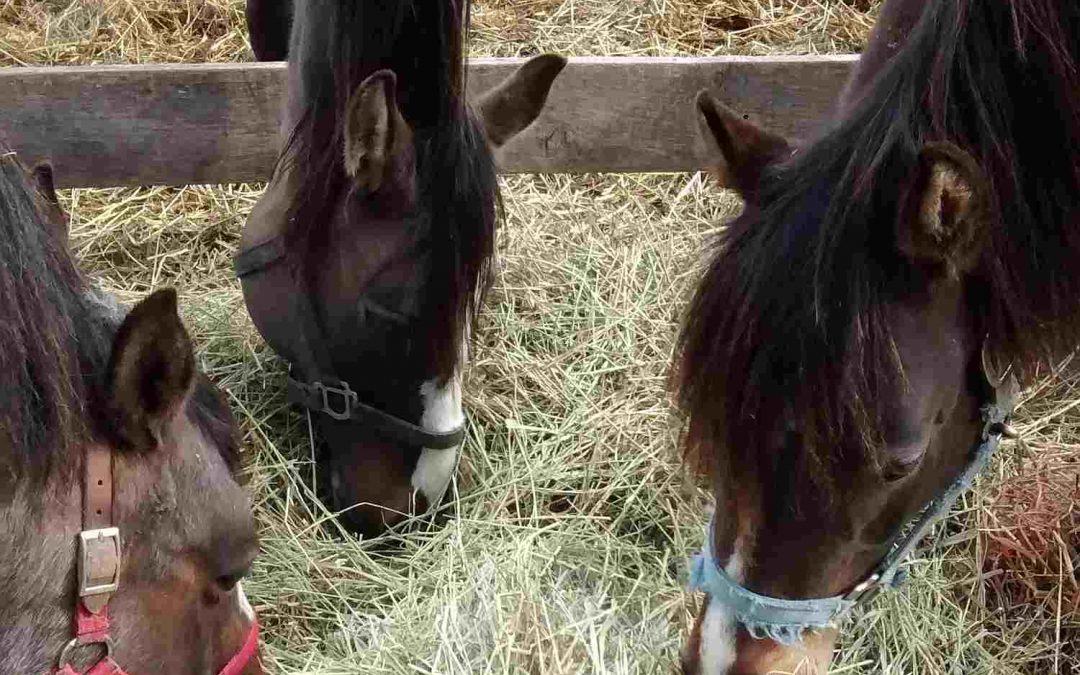
Mar 23, 2023 | General feeding practices

If you’ve ever wondered what is a low-starch diet for horses, and more importantly, should my horse be on one, then you’re not alone. However, it isn’t ideal for all horses. Ultimately, it will depend on their caloric requirements, the work they’re in and existing health conditions..
Forages should of course be the basis of any diet and are 75-90% carbohydrates. Carbohydrates include sugars, starches, and some fibre. These carbohydrates found in pasture and hay fall into two broad categories: nonstructural and structural. So horses actually rely on carbohydrates as the largest portion of their diet. Especially soluble and insoluble fibres that make up forage.
Carbs, sugars and starches in forage.
Non-structural carbohydrates (NSCs) in forages are simple sugars and fructans and can be readily digested or fermented by horses. They are produced in plants during warmer weather, and are higher in more immature forages. Pasture is usually lowest in NSCs in the early morning unless overnight temperatures are cold. However, these carbohydrates can affect some disease processes, so you need to monitor how much your horse eats.
Carbs, sugars, and starches in your horse’s hard feed
Grain based hard feeds contain carbohydrates, including simple sugars and starch. Grains such as barley, maize and oats are high in NSCs, mostly starches. Starches are long chains of attached sugar molecules. These sugars get broken apart during the digestive process and the simple sugars (glucose) readily absorbed. Most horses can digest and absorb sugars and starches in the small intestine through a process called hydrolysis. From there, glucose in the bloodstream triggers the pancreas to release insulin. Then the glucose molecules move into cells for storage as glycogen. This is the fuel for the working muscles.
If there’s more starch in a single meal than the horse can digest, starch will enter the caecum, (the first part of the hindgut after the small intestine). Any undigested starch here is rapidly fermented creating lactic acid. This lowers hindgut pH, killing the good bacteria that live there. The endotoxins released from microbial death can then contribute to both colic and laminitis.
So, just how much starch is in a low-starch diet for horses?
A “low-starch” feed usually contains less than 15% starch, but some feed companies might classify low-starch as any feed below 20%. Compare this to a traditional hard feed with grains such as barley, maize and oats as its base. These types of feed might be as much as 40-60% starch. A “mid-level” starch content is usually between 20 and 25%. Whilst many horses are fed high starch feeds seemingly without problems, the key consideration that still remains for any horse is how much starch is fed in any one meal.
Ultimately, there is no single definition of a “low- starch” diet as both sugar and starch concentrations are important. Therefore, it’s better that feeds are referred to as ‘low-sugar and starch’ or ‘low nonstructural-carbohydrates (NSC). NSC is a laboratory measure containing starch plus all water-soluble carbs (sugars and fructans). The recommendation for horses with metabolic issues therefore is not actually low-starch but low-Non-Structural Carbohydrates. So, if f low starch/low NSC is a primary concern for your horse and it’s not quoted on your bag of feed, then contact the feed manufacturer directly to find out.
Starch Content of Common Feed Ingredients
| Feed Ingredient |
Starch % |
| Legume hay (besides lucerne) |
1.56 |
| Grass Hay |
1.65 |
| Lucerne Cubes |
1.51 |
| Oaten Hay |
4.03 |
| Mixed, Mostly Grass, Pasture |
2.00 |
| Grass Pasture |
2.08 |
| Beet Pulp, Dried, No Molasses |
0.99 |
| Maize, Whole Grain |
69.44 |
| Oats, Dried |
43.96 |
| Oat Hulls |
14.90 |
| Rice Bran |
22.85 |
| Wheat Bran |
23.59 |
| Soybeans, Dried |
2.27 |
| Soybean Hulls |
1.20 |
| Soybean Meal |
1.65 |
| Carrots, Wet |
2.18 |
| Lucerne Hay |
2.50 |
| Lucerne Pellets |
2.08 |
| Mill Run/Mix |
26.20 |
Data collected from Equi-Analytical Laboratories
When should your horse have a low-starch diet?
For some horses with certain health conditions, vets and nutritionists might recommend a low-starch diet to help maintain blood glucose at a steady level. These are conditions that cause horses to become more sensitive to sugars and starches. This then means that owners will need to reduce these levels in both forages and concentrates. Individual horses have variable responses related to a variety of factors, including age, body condition, fitness, metabolic status, and disease status.
Obesity and equine metabolic syndrome (EMS)
These metabolic conditions are of major concern and there needs to be an overall reduction in calories consumed, not just from starches. Some breeds, especially pony breeds are “metabolically thrifty”, so they’re able to readily convert glucose into fat for storage. They will benefit from a lower-quality forage and no hard feed. This is where a quality feed balancer supplement such as one from the Fibregenix range, is ideal. It will provide vitamins, minerals, protein, fatty acids and other essential nutrients to bridge nutritional gaps in forage.
Insulin dysregulation (ID)
Insulin dysregulation is considered a component of EMS. In affected horses or ponies, insulin is not effective at transporting glucose from the bloodstream into cells, so both remain elevated. This can increase susceptibility to laminitis. Horses with this condition are extremely sensitive to starches. Ideally, they should be on as low a starch and, specifically, soluble-carbohydrate diet as possible.
Pituitary pars intermedia dysfunction (PPID, formerly Equine Cushing’s)
This endocrine disease mostly affects horses or ponies over the age of 15. Some, but not all, PPID horses will require a lower-starch diet. PPID horses that are also insulin-dysregulated are the ones which will benefit. However, some PPID horses are thin, non-insulin-dysregulated, and they need calories. In such cases a more traditional NSC level is fine.
Polysaccharide storage myopathy (PSSM)
Horses with this muscle disorder often have a normal glucose/ insulin metabolic process. They’re unable to use the form of glucose stored in their cells as energy and are also susceptible to tying-up (exertional rhabdomyolysis). This is the breakdown or destruction of skeletal muscle cells associated with exercise.
Laminitis
Laminitis prone horses and ponies should also have diets low in soluble carbohydrates and starch. Elevated levels of starch reaching the hindgut can lead to hindgut acidosis, killing off the good microbes. This releases endotoxins, which can negatively affect enzymes involved in maintaining the integrity of the laminae in the hoof leading to laminitis. Susceptible horses should not be allowed to graze immature or lush, rapidly growing pasture routinely found in spring and early autumn.
Gastric ulcers (EGUS)
Signs of this condition include poor performance, poor attitude, and mild colic. Horses prone to ulcers and hindgut acidosis benefit from a low-starch/high fibre diet. This is because chewing and consuming fibrous carbohydrates produces more saliva which in turn helps reduce acidity in the stomach.
Reactivity
Anxious or hyperactive horses may also benefit from less starch in their diets. Multiple studies (Bulmer et al., 2019; Destrez et al., 2015) have focussed on the diet’s effect on behaviour. But more recently, they’ve focussed on the “why” behind this. The latest studies have revealed that glucose is a sugar that easily crosses the blood-brain barrier. Elevated glucose levels are associated with increased dopamine production. And this can lead to elevated awareness or hyperexcitability.
Should you change your horse to a low-starch diet?
If your horse doesn’t have any of the aforementioned conditions, then he probably doesn’t need a low-starch diet. In fact, performance horses benefit from a diet with readily available carbohydrates needed to replace the stored glycogen in working muscles. Especially those that do anaerobic exercise (short bursts of high-intensity training) during work. When muscle glycogen is low, the muscle adapts by slowing contraction rate and power to conserve fuel (glycogen). This is obviously not desirable in a competition horse. Similarly, hard keepers might not be good candidates for low-starch feeds either, unless you increase the fat content in the diet. These horses need more readily available calories than the fibrous ingredients often used in low- starch feeds.
Traditional hard feeds with grains such as barley, maize and oats as its base might be as much as 40-60% starch. A “mid-level” starch content is usually between 20 and 25%. Whilst many horses are fed high starch feeds seemingly without problems, the key consideration that still remains for any horse is how much starch is fed in any one meal.
When looking at starch levels, check the feeding rate as well as the % on the feed bag or label. There’s a misconception about the % on a feed bag or label being the same as the amount of starch received on a daily basis
Balancers, fortified fibre feeds, mueslis & pellets will all have different feeding rates for a 500kg horse. Therefore, to work out how much starch they are receiving it’s important to first understand the recommended feeding rate of the feed.
The table below shows ideal targets to follow when considering how much starch your horse should have.
|
% starch in your hard feed |
IDEAL TARGET |
| To avoid starch overload, rapid fermention in the h/gut |
50-65% for sweet feeds, 45-75% for straight grains |
<2g/kg BW/meal |
| To avoid risk of gastric ulcer syndrome
|
|
<1g/kgBW/meal |
| For metabolic disorders such as IR, Cushings, laminitis etc
|
|
<0.3g/kgBW/meal |
Example of Pelleted balancer v a standard hard feed for those at risk of gastric ulcers
It’s recommended starch should be limited to a maximum of 2g or less per 1kg of bodyweight per day. And 1g or less per 1kg of bodyweight per meal. So, a 600kg horse can have up to 1.2kgs of starch per day with no more than 600g per meal.
If you’re feeding your 600kg Warmblood Fibregenix Pro balancer at the recommended feeding rate (100g/100kg bodyweight) 600g a day. It has a starch level of 6% so your horse will be receiving 36g of starch from the balancer per day.
If you’re feeding your 600kg warmblood a hard feed at the recommended feeding rate (2.5kg a day) If the starch level is 10.5%, your horse will be receiving 262.5 g of starch per day.
Let’s take a high starch performance feed with a starch level 26% fed at 2.5kg a day for a 600kg horse. This will provide 650g starch. This is still within the maximum recommended intake for those horses prone to gastric ulcers. However, we would recommend splitting this into multiple meals during the day so that it’s below 1g/1kg bodyweight per meal.
Making Changes To a Horse’s Diet Safely
Any changes MUST be slow and gradual so as not to upset the hindgut microflora. Gut microbes must have time to adjust to a new diet, so it’s generally accepted to make the complete transition over about two weeks.
For horses needing a low-starch concentrate, transition them the same way you would to any new diet. Start with a meal that is ¼ of the new feed and ¾ old feed and stay at this level for four days. Move up to ½ and ½ for another four days. Then switch to ¾ new feed and ¼ old feed for another four days. By the end of this period, you should be able to feed a full meal of the new feed. If you are concerned about NSC levels in forage, then limit pasture access when they’re elevated (e.g. during spring grass growth). Soak hay before feeding. Just remember to discard the soak water, so the horse doesn’t drink it.
What if a sudden change can’t be avoided?
Sometimes, the transition to a low-starch diet has to happen suddenly. For instance, after a metabolic event (e.g., laminitis) where the horse is moved from lush pasture to being yarded. Or begins to wear a grazing muzzle. In these cases, you don’t have days or weeks to make the change. So watch your horse carefully for signs of digestive disturbance such as diaorrhea. If signs develop (and if possible), back off the transition rate and make the conversion more slowly.
What if you have more than one horse and only one requires a low-starch diet? You might be tempted to think you could feed all the horses the same feed. However, whilst it may make feeding more convenient, you still have to consider each individual horse’s needs and feed accordingly.
Feeding for individual needs
What if you have more than one horse and only one requires a low-starch diet? Tempted to feed all the horses the same feed? Whilst it may make feeding more convenient, you still have to consider each individual horse’s needs.
5 Take-home messages
- A low-starch diet might be a suitable option for your horse, but it depends on his health status.
- Horses in good body condition, fit for their discipline, with high caloric demands can cope on a more traditional feed containing higher starch levels. Even so, care must still be taken with how much starch is fed in any one meal.
- Before making any changes, talk to your vet or an equine nutritionist.
- Find out how much starch is in your horse’s feed when the term “low starch” is used. This will ensure you are making decisions based on the best information available.
- Always make any changes to the diet gradually so as not to upset the digestive microbes.
Reviewed and amended April 2021
Sep 5, 2022 | General feeding practices
 WHAT ARE MYCOTOXINS?
WHAT ARE MYCOTOXINS?
Mycotoxins are a worldwide microscopic menace and are a serious danger to your horse’s health…
Myco is the Greek word for fungus. Whilst toxins simply means poisons which are produced in various types of fungi.
WHEN ARE THEY MOST PREVALENT?
Autumn is usually the prime time for mycotoxin growth essentially because rainfall becomes more prevalent coupled with cooler conditions. However, mycotoxins can occur at any time of the year when conditions favour fungal growth. Here, in Western Australia, the winter months have been significantly wetter than previous years interspersed with mild, warm weather conditions. These conditions have resulted in vets recently reporting a significant increase in cases of rye grass staggers.
Furthermore, any time grass is actively growing and producing bright green foliage, there’s an added risk for grass staggers (tetany). This is a result of a surge in potassium and NSC (grass fructan) levels …
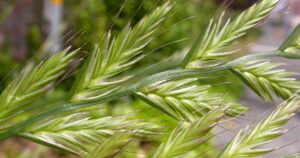
annual ryegrass seed head
Some mycotoxins live inside the plant (endophytes). For example, Perennial rye grass contains the endophyte, Neotyphodium lolii, which produces the harmful mycotoxin Lolitrem B. Another mycotoxin affecting rye grass and fescue grass species is Ergovaline – a vaso-constrictor.
Others can be found externally on the plant in the form of a ‘gall’ or growth. For example, Annual rye grass, can develop a highly poisonous bacteria form on the seed heads, also causing staggers symptoms. Significantly, even when cut for hay, the toxin can remain for years during storage.
Causes of Annual Ryegrass Toxicity in Horses
- Parasites eg the nematode Anguina funesta, which carries the bacterium Rathayibacter toxicus into the ryegrass seed heads
- The horse ingests contaminated ryegrass while foraging
- The horse is fed hay or grain that has contaminated ryegrass
- Hay is prepared in contaminated machinery, then fed to the horse
- The central nervous system is affected by corynetoxin produced by Rathayibacter toxicus
Symptoms of Annual Ryegrass Toxicity in Horses – what makes them a danger to your horse’s health?
After the toxic ryegrass is ingested by the horse, it can take 4-5 days before clinical signs develop. However, some horses can show symptoms very quickly, often overnight.
Symptoms may include:
- A lack of coordination
- Falling
- Convulsions
- Stiff legs to the point of looking lame
- Tremors
- Pregnant mares may abort their foal
- The horse becomes anxious, is spooked easily
- Dragging of hind limbs or stepping short
- Drooling
- Muscle twitching
- A wide-based stance
- Exercise or excitement may trigger reoccurrence of the symptoms
- Staggering
- Weakness
- Death
Mycotoxins can also be prevalent in the surrounding soil. Particularly in the low PH soil typical in Australia and in any decaying matter. In fact, there are hundreds of different mycotoxins in and around all pasture types. Moisture in the air plus warmth means ideal conditions for them to thrive and develop. You may have noticed mushrooms or other fungal growth popping up in your paddocks or muck heap during this weather. And when these are growing well, the endophytes within ryegrass are also likely to be doing well.
MYCOTOXINS IN GRAIN
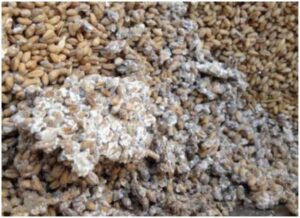
mould growing on grain
It’s been estimated by he WHO that some 25% of the world’s grains have some form of mycotoxin contamination.
The most studied of these is aflatoxins derived from Aspergillus moulds. These are prevalent in grain that’s under drought and insect stress, with prolonged periods of hot weather. Aflatoxin is a cancer promoter and an immunosuppressant and has a huge impact on livestock.
There are two main groups of fungi producing mycotoxins that are a serious danger to your horse’s health. They are the field fungus Fusarium, which produces the toxins fumonisin, zearalenone and T2. Additionally, there is also the storage fungus Aspergillus, which produces the toxins aflatoxin and ochratoxin. Fumonisins are a group of toxins most prevalent when cool wet weather at crop maturity follows early season drought stress. Studies show that horses are highly susceptible to liver damage and to the brain disease leukoencephalomalacia at fumonisin levels above 10 ppm.
MYCOTOXINS AND THEIR EFFECT ON PERFORMANCE HORSES

One of the major causes of poor performance in horses are respiratory infections. Eg recurrent airway obstruction (RAO) (similar to asthma in humans), and exercise induced pulmonary haemorrhage (EIPH). Fungi and mycotoxins are now recognised as a major cause of these conditions, both by ingestion and inhalation. Fungal spores can originate from forage, bedding and feed and can even grow in baled hay with high moisture content. In turn, these fungal spores can produce a series of mycotoxins as secondary metabolites. The most notable fungi being Aspergillus and Fusarium. If you’re keen to read more on this topic plus the interesting study accompanying it, please go to the link below….
Source: Buckley, T., Creighton, A. & Fogarty, U. Analysis of Canadian and Irish forage, oats and commercially available equine concentrate feed for pathogenic fungi and mycotoxins. Ir Vet J 60, 231 (2007). https://doi.org/10.1186/2046-0481-60-4-231
Fibregenix’s Added Bonus Mycotoxin Binder
Fibregenix Lami Low-Cal is our specialist diet balancer primarily formulated for overweight and laminitic equines. This category will often need to be taken off grass or have severe restrictions during the riskier seasons. Many will need yarding with hay as the best interim solution. Lami Low-Cal balancer will ensure your horse or pony has his daily nutrient requirements met in full when on forage only. However, we also wanted to go one step further and include protection from mycotoxin exposure. This is why, as an added bonus we have included a superior mycotoxin binder to give you peace of mind that your horse or pony’s risk of exposure to mycotoxins is minimalised.
Mycofix 5.E– The Next Generation in Mycotoxin binders…This unique binder uses three modes of targeted action for the most complete mycotoxin risk management of any mycotoxin binder.
- adsorption – contains an EU authorized bentonite that selectively binds more than 90% of aflatoxins
- biotransformation – targeted enzymes and biological components that convert mycotoxins into nontoxic, environmentally safe metabolites in the digestive tract.
- bioprotection – an innovative mix of natural ingredients that provide immune support and counter the harmful effects of mycotoxins to deliver absolute protection.
These 3 things make this specific MT binder the most scientifically advanced mycotoxin protection available.
Take Home message
Mycotoxins are the invisible danger to your horse’s health because they don’t show up in blood tests.
Never feed mouldy hay or feed.
Ryegrass staggers is only fatal in the most severe of cases. Most horses will be well within one or two weeks, once the toxic feed source has been removed from their diet.
Feeding a mycotoxin binder can speed up recovery.
Purchasing rye grass hay, whether Perennial or Annual, even if combined with other grass or cereal hays? Always check whether the hay has been certified as endophyte free or RGT tested. Any hay grower worth their salt will go to the extra expense of having their hay tested.
Beware of cheap hay being advertised for sale. The seller may not be aware of the source or may not be aware of the potential risks to the end consumer ie your horse.
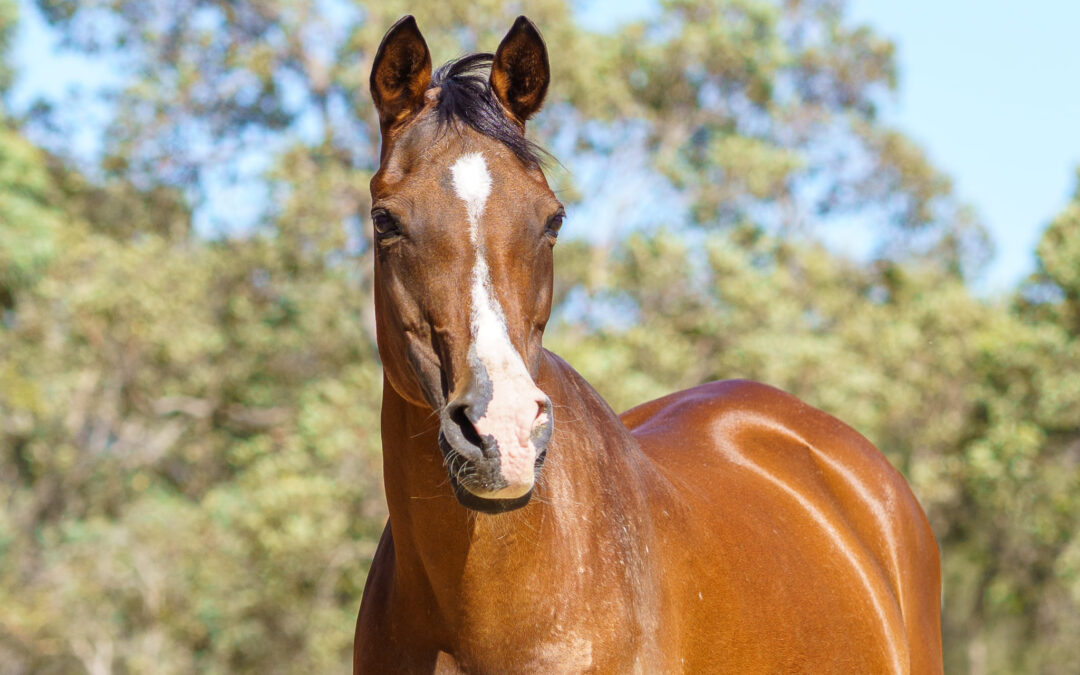
May 10, 2022 | General feeding practices
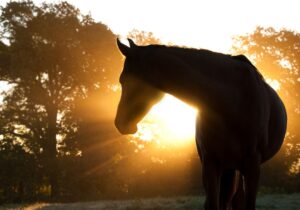 What are Feed Balancers?
What are Feed Balancers?
Feed balancers, or ration balancers as they are sometimes referred to, are a versatile approach to feeding horses. Yet despite their usefulness, there is still so much misunderstanding of this type of horse feed product. Whilst they might look like just another pelleted feed, they will provide that extra ‘punch’ to any feeding programme. We all want our horses to look and feel their very best with a happy outlook on life. So, keeping their diets as close to nature as possible ie mostly forage, is the best way to achieve this.
So What Are Fibregenix Feed Balancers?
A Fibregenix balancer may initially seem like any other vitamin/mineral supplement for your horse. However, it provides every daily essential nutrient necessary in a low-intake, low energy, highly concentrated source. And not just vitamins and minerals. Added extras such as protein, fatty acids and digestive aids to promote a healthy gut and improve feed utilisation are also included. This makes a Fibregenix Feed Balancer the ultimate ‘all in one’ feed additive product.
These balancers are designed for when additional calories are not required. And they’re fed in much smaller amounts than standard hard feeds. Usually 100g per 100kg bodyweight (500 grams for a 500kg horse). Your standard 50-100g of a vitamin and mineral supplement just can’t match the functionality provided by a genuine feed balancer.
So when, why and how would I feed a Fibregenix Balancer?
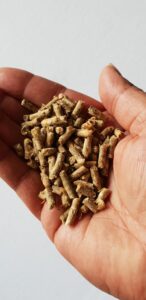
Fibregenix pellets
Fibregenix Feed Balancers can be used in the following ways:
Fed alone as a low-calorie source of protein, vitamins, and minerals to balance forage.
Depending on forage quality, your horse should be able to get all his daily essential nutrients from pasture or hay. However, it’s widely recognised that modern forage and pasture is frequently deficient in minerals and other nutrients. Forage analysis can help you pinpoint exactly what is lacking. This is when a balancer is a great way to counteract these deficiencies. Furthermore, feeding the recommended daily amount of a balancer means no additional vitamin or mineral supplement should be required.
Fed alongside ‘Straights’.
Some owners prefer to incorporate ‘straights’ such as lupins, oats, barley etc alongside beet pulp, chaff, oil etc. Whilst great ingredients, they can leave a diet unbalanced in some specific areas such as macro minerals. So, a balancer is ideal for this type of feeding programme. The main components of the feed provide the calories. And the balancer is added to ‘fill in the nutritional gaps’ of these ingredients, supplying amino acids, vitamins and minerals and essential fatty acids.
Feeding less than recommended?
Concentrated balancers really come into their own if you need to feed less than the recommended quantities of a hard feed. Eg a performance muesli or pellet. Maybe you’re cutting back your horse’s feed to keep weight down or to avoid hot behaviour. In this way, balancers are ideal, providing essential nutrients for health and performance without additional energy (calories) or starch. They also give you the option of feeding smaller amounts of a lower energy hard feed. Then you can top up the nutrient, (but not energy) levels, to meet the increased demands of work or competition.
Many modern horse breeds maintain weight on limited calories, even when asked to perform hard work. Because of the concentrated nature and low feeding rate, a feed balancer can meet the protein, vitamin, and mineral needs. And it does this without adding excessive calories or starch to the diet. Even those on stable rest/convalescing benefit from a source of essential nutrients without the calories, provided by a balancer.
Added Extras in Balancers:
Whilst feed balancers are a modern and cost-effective approach to feeding horses, you need to do your research. Not all balancers are created equal and a genuine balancer should be:
- Ideally free from whole cereal and molasses.
- A specialist tailored range catering for different categories of horses and ponies rather than a ‘one balancer suits all’ approach.
- High in functionality with special digestive enhancers eg nucleotides and equine approved probiotics and prebiotics. These are key to ensuring digestive health and maximising nutrient yield from forage.
Busting 6 myths on Fibregenix balancer supplements
Myth 1 Fibregenix balancers provide calories for weight gain.
Fact: Generally, any balancer will provide low levels of calories when fed at the recommended amount, regardless of the manufacturer. The term ‘conditioning’ is generally used in association with high-calorie products aimed at weight gain. However, the live yeast probiotic additive in Fibregenix balancers has been shown to double fibre digestion and utilisation. Keep in mind though, a balancer won’t be a substitute for the additional feed poor doers may need to gain/maintain weight. But it will work alongside your horse’s fibre, helping him make more out of it. And this, in turn, can actually help with weight gain.
Myth 2 Fibregenix balancers are expensive to feed.
Fact: With a high price tag compared to a bag of standard hard feed, a Fibregenix balancer may seem like a costly investment. However, they are polar opposites to a standard hard feed. And, due to the low feeding rate (typically 500g a day for a 500kg horse), they’re actually a very cost-effective way to ensure a balanced diet. Depending on pack size, a bag of Fibregenix will typically last 30 days for a 500kg horse and costs less than $3 per day to feed. For smaller ponies it becomes even more economical.
Myth 3 Forage is enough for many horses.
Fact: Hmmm, if only! Yes, in the perfect world where grass grows on the most perfect nutrient rich soils which remain so all year round. Whatever the season. Reality check: For sure, forage can easily meet or even exceed energy (calorie) requirements for many horses. However, these days, forage-only diets are unlikely to provide a balanced supply of vitamins, minerals and quality protein. Lysine, for example, is one of the most important essential amino acids that horses need in their diet every day. And frustratingly, it’s typically low in forage. Average hay is also unlikely to meet maintenance requirements, especially if fed at minimum rations for those on restricted diets.
Hay can also contain negligible levels of vitamin E. This important antioxidant plays a key role in supporting muscle health and immunity. While vitamin E levels in fresh grazing are typically high, other nutrients like copper, selenium and zinc are typically low. Vitamin A is another essential nutrient and the content of beta carotene (the precursor for vitamin A) diminishes the longer hay is stored for. In fact, after 6 months, it can be almost negligible.
Additionally, during the curing process, hay will lose all its Omega 3 and 6 essential fatty acids which are naturally present in grass.
Myth 4 A Fibregenix balancer will make my horse excitable.
Fact: No, it won’t. Diet can generally affect behaviour in one of two ways. By oversupplying energy or by providing high levels of starch and/or sugar. Low feeding rates means our balancers provide a negligible level of energy, starch and sugar when fed at the recommended amount. This makes them an ideal choice for excitable horses and ponies that maintain weight easily (or gain too easily!) on forage alone.
Myth 5 A Fibregenix balancer will give my laidback horse more energy.
Fact: Unfortunately, the idea of finding a feedstuff that’s high in energy, but low in calories really is too good to be true. Fibregenix balancer supplements aren’t energy providers. Low starch and sugar means they contain low levels of energy/calories when fed at the recommended rate. This makes them ideal for good doers. If your horse lacks energy, it may also be that he lacks fitness for his work.
Myth 6 There’s no difference between a Fibregenix balancer and a broad-spectrum vitamin and mineral supplement.
Fact: Unlike broad-spectrum vitamin and mineral supplements, Fibregenix balancers also supply digestible protein. This provides key amino acids such as lysine and methionine. Then we’ve added essential Omega 3 & 6 fatty acids and hoof improvement nutrients along with vitamins and chelate minerals. Each balancer also contains our high-powered live probiotic yeast and purified nucleotides. And for the harder working horse we also added a gut health package of MOS & FOS prebiotics.
Take Home Message:
The beauty of a Fibregenix balancer is the flexibility provided in customising the nutritional management of individual horses. The key is to keep your horse’s diet as simple as possible whilst satisfying nutritional demands even for working horses. Ultimately, this means more emphasis on fibre feeding as the healthiest approach.
Oh and below is Sophie Taiki’s stunning boy who really benefitted from getting on to Platinum Pro.
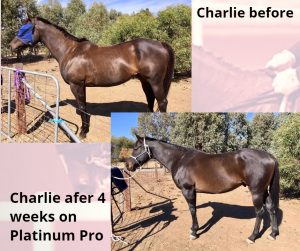
Tango Charlie fed on Fibregenix Platinum Pro
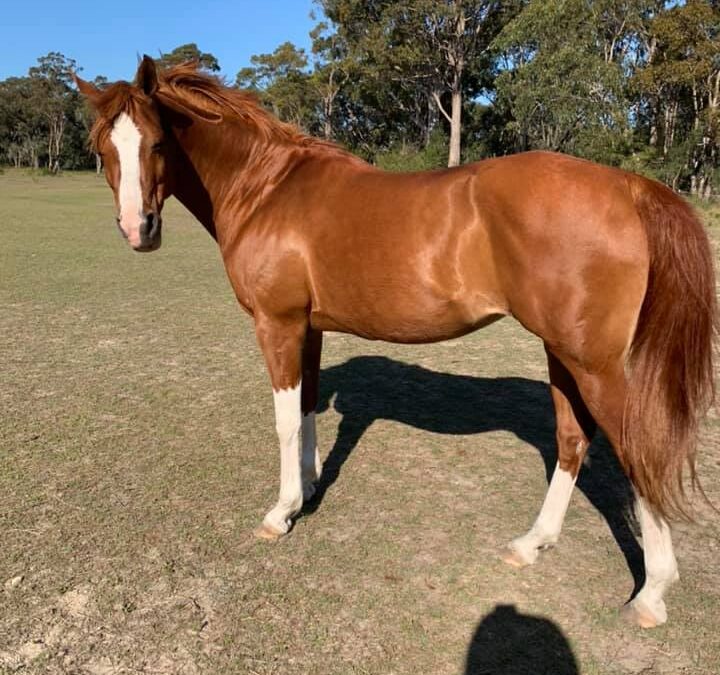
Aug 16, 2021 | General feeding practices
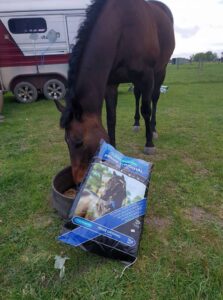
Bucks tucking into his Fibregenix
Here’s our ultimate guide to effective, simple feeding with balancers. So, you’ve taken the plunge and got your first bag of Fibregenix. A good decision made! Fibregenix feed balancers will be you and your horse’s best friends. Bucks certainly thinks so!
The 3 big questions we are most often asked.
1. How do I keep an effective, simple feeding regime with Fibregenix feed balancers?
Well, as you know, we are big promoters of fibre feeding in the first instance. It’s what is naturally best for your horse or pony, and what he/she has evolved to eat. So, it’s a no-brainer to keep your horse or pony’s diet mostly forage based. However, we do appreciate that there are times when your horse may require more calories (energy). Furthermore, not all horses are good doers. More on that later…
2. What other feeds do I feed with it?
Here are some suggestions to accompany your balancer (which is fed at 100g per 100kg of bodyweight). (Remember, to avoid dietary imbalances and potential nutrient conflicts, you generally shouldn’t need to feed additional supplements).
Fibregenix Prime Original for horses up to novice level, show horses & ponies, broodmares & foals:
Suggested Fibre feeds: Hay (cereal, meadow, legume), haylage, hay cubes, Lucerne chaff/pellets, cereal chaffs, shandy chaffs, beet pulp products. There are plenty to choose from but avoid heavily molassed products.
Fibregenix Platinum Pro for performance horses in hard work, veterans or those with compromised digestive systems.
Feed any of the fibre feeds as above and if feeding for slow-release energy eg endurance – oils/fats NB: Cold pressed linseed oil has the best balance of OM3:OM6)
Feeding for fast-release energy eg, eventing, racing, polo etc
Straight Grains: oats, (whole, crushed or naked); barley, (boiled or micronized); maize – (flaked/ micronized). Legumes eg lupins. Oil can also replace part of your grain ration. We suggest linseed oil or simple veggie oil. Standard hard feeds can also be partially replaced with any of the balancers. Be aware of the starch content of grains or standard hard feeds. Always feed in several small meals to avoid compromising the digestive system.
Healthy Horse Tip: A horse’s stomach can only hold approx. 0.5% of its bodyweight in feed at one time. Eg a 500kg horse’s stomach can only hold 2.5kg of feed. This includes not just hard feed, but chaff and any other additional feedstuffs eg beet pulp. So always keep within this parameter and split feeds into smaller meals. Yes, tedious I know but it’s all for the greater good! …
Fibregenix Lami Low-Cal – for laminitis prone horses and ponies and other metabolic issues, good doers, stable confinement.
Soaked hay, low NSC hay (preferably below 10%), low sugar chaff, unmolassed beet pulp. Restrict grazing or yard with appropriate amounts of soaked hay fed in a slow feeder net. (Never starve an overweight or laminitic horse or pony)
3. Do I still need to feed hard feed?
This totally depends on the type of work your horse/pony is doing. You also need to consider his breed type/temperament, or if he has any health issues. Always feed for the work being done, not what you think your horse is going to do. This means if you aren’t working your horse, back off the hard feeds! Generally, horses and ponies can be split into 3 types – good doers, normal doers and poor doers.
Good doers eg native ponies, cobs or horses with a naturally laid-back temperament. Fibre feeds alongside Lami Low-Cal balancer will suit these types best. Even in light to moderate work. And if in hard work, low energy feeds such as beet pulp or small amounts of legumes such as lupins or good quality forage will provide extra energy.
Normal doers are just that. They are easy to keep weight on but don’t get overly heavy or drop weight when the wind changes direction. Keep the diet high in fibre and monitor weight as you go along. Add legumes such as lupins and oil for grain free energy sources.
Poor Doers. This category of horse or pony often has a history of digestive issue – predominantly ulcers. (Stomach or Hindgut). They could also have a history of a heavy worm burden which can affect gut motility and create a horse which will be a poor doer all its life. They may be super sensitive types and have a hot temperament which can be genetic or due to the aforementioned gut issues eg TBs or Warmbloods. So, what do you feed a poor doer when high energy feeds are needed for work but must be limited or are totally off limits? Grain free energy sources eg lupins, beet pulp and oil/fat. We have customers with starred TB event horses that cannot tolerate grains. These horses do very well on a basic diet fed in appropriate amounts of course.
Meeting his daily feed requirements.
Bear in mind that your horse needs at least 2% of his bodyweight in total dry matter feed intake every day. If he drops off, firstly check the quality of your forage and how much you’re actually feeding.
Secondly, remember the Horse Health Tip of small regular feeds, rather than overburdening the digestive system. If you’re feeding heaps of feed and he isn’t gaining or is still dropping weight, consult with your vet. He may need scoping for ulcers, and they must be treated to heal and clear. Alternatively, there could be other digestive or health issues, so get him checked out.
Take Home message: Maintain a simple feed regime to keep your horse’s digestive system happy. Contact us if you need help with your horse’s diet. We’re always happy to advise and have a wealth of experience of feeding all types of horses and ponies whatever their workload/circumstances.
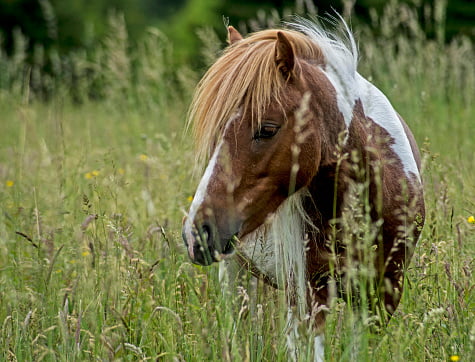
Apr 2, 2020 | General feeding practices
Home » General feeding practices
Reduce Feeding Costs
Feeding horses can get really expensive. Are you worried about the cost of your horse’s supplements and hard feeds? Are you looking to reduce feeding costs? How will you do this without it impacting on your horse’s condition, topline or coat and hooves?
Maybe you’ve had to make cutbacks in your horse’s diet due to a reduced workload or to simply save dollars. If you’ve had to opt for a simpler fibre-based diet, what should you feed alongside it? A vitamin/mineral supplement? An additional gut supplement? Extra protein plus something for hooves and coat? All or some of these things?
If you’re currently feeding any of the above supplements, why not consolidate EVERYTHING into just one product? But which product should you choose for the most effectiveness, ease of use, dollar saving, peace of mind and the best results?
To help you choose, we explain the most common types of feed products and what they do for your horse.
Complete feeds, Hard Feeds, Fibregenix balancer supplements – What’s the difference?
Reduce Feeding Costs with a Complete feed – What is it?
A feed that contains everything your horse needs in his diet including the forage.
Benefits:
It can be fed as the sole ration—no need for hay or pasture – just provide water and the complete feed.
High fibre and is ideal for senior horses that can’t chew or fully utilise hay or pasture
Downsides:
Tends to have very large serving sizes, often around 1.5% of the horse’s bodyweight so a bag won’t last very long.
People often provide additional forage/grazing, so your horse can be getting too much for his daily needs.
Adding extra forage or supplementation defies the purpose of a complete feed making it cost-ineffective.
Reduce Feeding Costs with a Hard feed – What is it?
A processed feed that’s generally cereal-based and is fortified with a vitamin and mineral premix. It may or may not also contain some lower quality or least cost digestive aids. It needs to be fed alongside an appropriate amount of forage, (usually recommended as no less than 1% of bodyweight)
Benefits:
It provides energy and calories, plus essential nutrients in one feed. Just add forage and you’re good to go.
Downsides:
Because the concentration of vitamins and minerals per kilogram is quite low, your horse must be fed the recommended daily feed rate. This is to ensure he gets adequate levels of nutrients to balance his diet. It also inevitably means feeding multiple kilos.
The high levels of starch/sugar/energy eaten to satisfy the daily essential nutrient requirements, can often mean horses put on weight. They may become hyperactive/excitable. Worst case scenario, it can cause digestive issues eg stomach ulcers or ‘acid guts’ from over-consumption of starch in any one meal.
Not ideal for grain sensitive or metabolically challenged horses or ponies.
High starch meals will need to be broken down into several smaller meals per day which isn’t time effective for anyone who can only feed twice a day.
A bag won’t last very long if fed at the recommended daily feed rate, so it can be expensive. Eg a feeding rate of 3kg per day for an average 500kg horse means a bag will last just over 6 days.
Reduce Feeding Costs with a Fibregenix Feed Balancer – What is it?
Think of it as an all in one multi-supplement. In essence, a heavily fortified feed product containing some fibre, protein and fatty acids, superior digestive aids and essential nutrients. It’s designed to be fed alongside forage and complements common forages’ nutrient profiles. A Fibregenix feed balancer may seem more expensive than other feed products, but being concentrated, only a small amount is fed. So a bag of balancer will actually last longer than a bag of hard feed This makes it versatile and far more cost-effective long term.
Benefits:
- Gives your horse a healthier digestive system thanks to specific digestive supplements. These can help process fibre more efficiently, maximising nutrient yield and helping to reduce the risk of digestive upsets
- Keeps your horse in great condition
- Maintains that precious topline you’ve worked so hard to build
- Promotes the shiniest and glossiest coat
- Promotes healthy hooves
- Provides all the essential nutrients needed on a daily basis in the most absorbable form. We’ve made no compromise in the selection of the ingredients for Fibregenix feed balancers. Only the best has been selected irrespective of the premium price some of them carry.
- Low feeding rate, palatable and can be fed by hand at the paddock gate or those on spell that doesn’t need an additional bucket feed.
- Save dollars too as NO OTHER SUPPLEMENTS needed and can reduce or eliminate the need for additional hard feed.
- Whole cereal and molasses free so Non-heating
- Very low in starch and sugar
- Low feeding rate and cost-effective – just 100g per 100kg of bodyweight meaning a bag will last an average 500kg horse 30 days.
- A range of balancers are available, so there’s a solution for every horse and pony whatever the dietary dilemma.
Downsides:
Not calorie providers. However, the specialised digestive aids in a Fibregenix balancer supplement have been proven to double fibre digestibility and enable an improved nutrient absorption. This improves calorie intake and is the reason why Prime Original and Platinum Pro can be fed alongside fibre to provide the sole source of energy and calories. Especially in the case of good-doers and even those in light to moderate work.
To summarise:
The simplest solutions are often the best. Fibregenix is the balancer product range that will revolutionise your horse’s diet and keep him healthy for his lifetime.
Reviewed and amended April 2021
![]()

![]() Horses have evolved to roam for miles surviving on mostly grass forage and consume a wide range when available. Compared to their feral cousins, domestic horses have far more challenges when it comes to their diets. We provide restricted areas by creating paddocks which often have limited forage types or unsuitable grass species. Plus, availability and nutrient uptake content can fluctuate considerably from season to season, as well as challenges with soil deficiencies. In the short term – just like us – equines are reasonably resilient to many nutrient deficiencies or even excesses. However long-term, problems start to creep in. Poor hooves and coat quality, loss of topline and overall condition, digestive issues leading to poor performance and behaviour etc. The list goes on. Despite us having access to a plethora of the latest and greatest fortified hard feeds and hay at our disposal.
Horses have evolved to roam for miles surviving on mostly grass forage and consume a wide range when available. Compared to their feral cousins, domestic horses have far more challenges when it comes to their diets. We provide restricted areas by creating paddocks which often have limited forage types or unsuitable grass species. Plus, availability and nutrient uptake content can fluctuate considerably from season to season, as well as challenges with soil deficiencies. In the short term – just like us – equines are reasonably resilient to many nutrient deficiencies or even excesses. However long-term, problems start to creep in. Poor hooves and coat quality, loss of topline and overall condition, digestive issues leading to poor performance and behaviour etc. The list goes on. Despite us having access to a plethora of the latest and greatest fortified hard feeds and hay at our disposal. Consider bagged fibre products to complement hay intake. The latest lupin fibre mash products spring to mind or hay cubes/pellets. Remember, investing in a quality feed ultimately pays dividends.
Consider bagged fibre products to complement hay intake. The latest lupin fibre mash products spring to mind or hay cubes/pellets. Remember, investing in a quality feed ultimately pays dividends.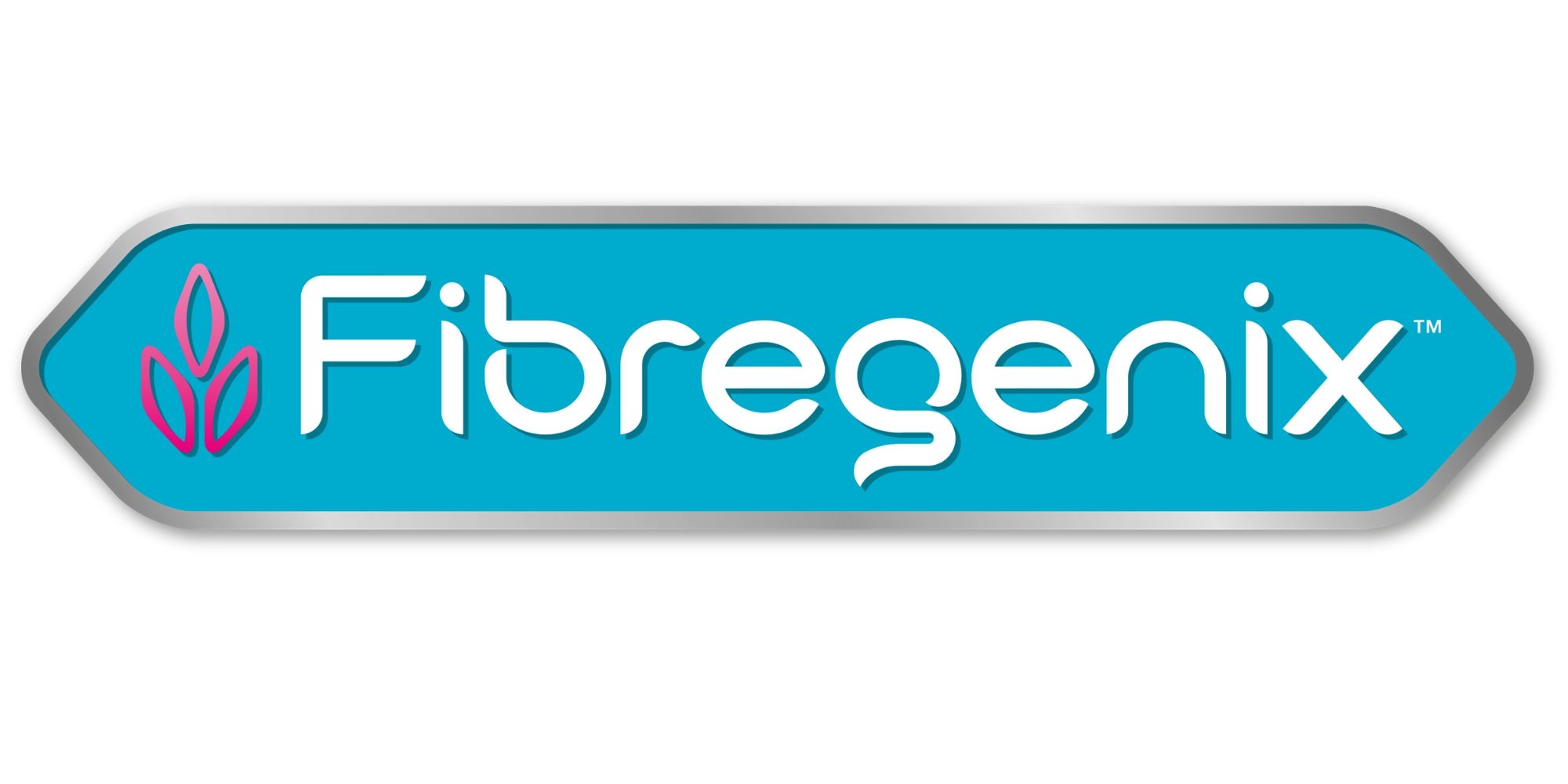






 What are Feed Balancers?
What are Feed Balancers? 




